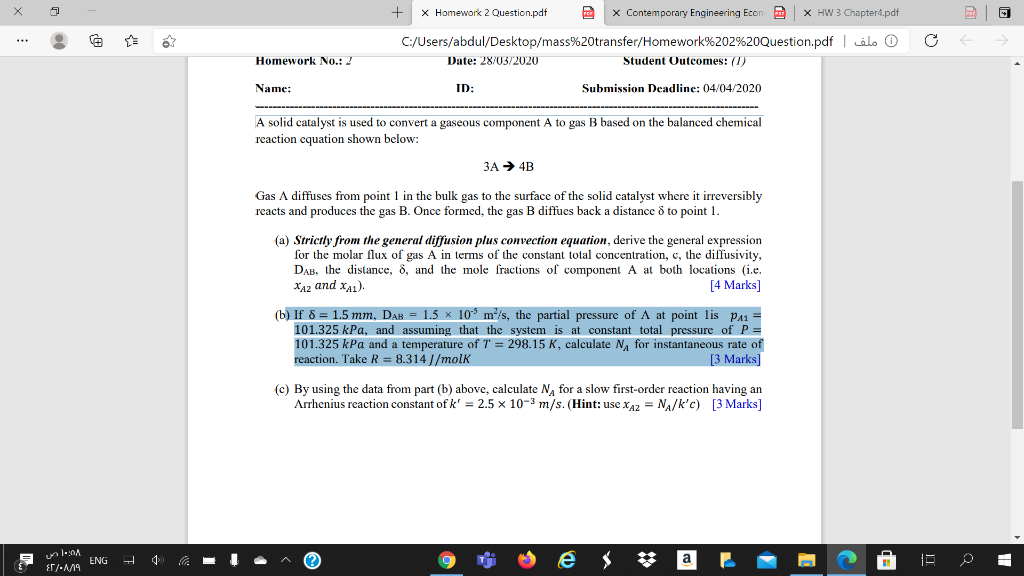
Х 7 + X Homework 2 Question.pdf X Contemporary Engineering Econ X HW 3 Chapterd.pdf C:/Users/abdul/Desktop/mass%20transfer/Homework%202%20Question.pdf lo o Date: 28/03/2020 Student Outcomes: (1) (1) Homework No.: 2 Name: ID: Submission Deadline: 04/04/2020 A solid catalyst is used to convert a gaseous component A to gas B based on the balanced chemical reaction equation shown below: 3A 4B Gas A diffuses from point 1 in the bulk gas to the surface of the solid catalyst where it irreversibly reacts and produces the gas B. Once formed the gas B diffues back a distance & to point 1. (a) Strictly from the general diffusion plus convection equation, derive the general expression for the molar flux of gas A in terms of the constant total concentration, c, the diffusivity, DAB, the distance, 8, and the mole fractions of component A at both locations (ie. XAz and XA1). [4 Marks] (b) If 8 = 1.5 mm, DAB = 1.5 x 10-5 m/s, the partial pressure of A at point lis P41 = 101.325 kPa, and assuming that the system is at constant total pressure of P= 101.325 kPa and a temperature of T = 298.15 K, calculate NA for instantaneous rate of reaction. Take R = 8.314J/molk [3 Marks] (c) By using the data from part (b) above, calculate NA for a slow first-order reaction having an Arrhenius reaction constant of k' = 2.5 x 10-3 m/s. (Hint: use XAz = N/k'c) [3 Marks] in l.:04 ET/-119 ENG - e a IP 0 A
没有找到相关结果